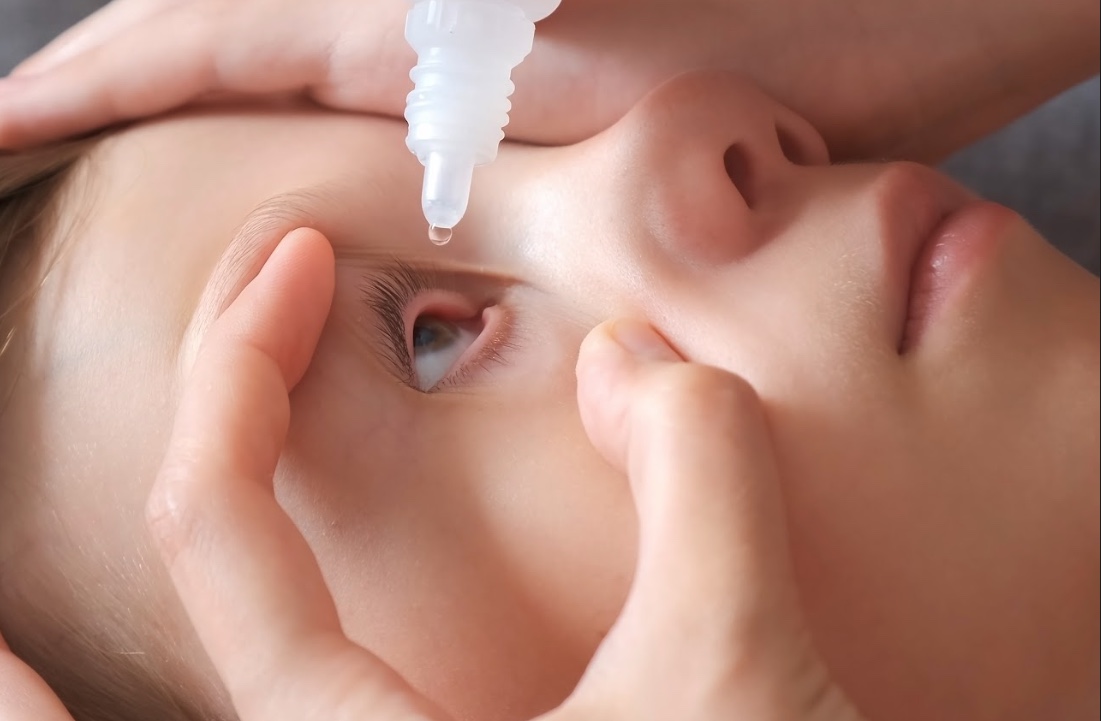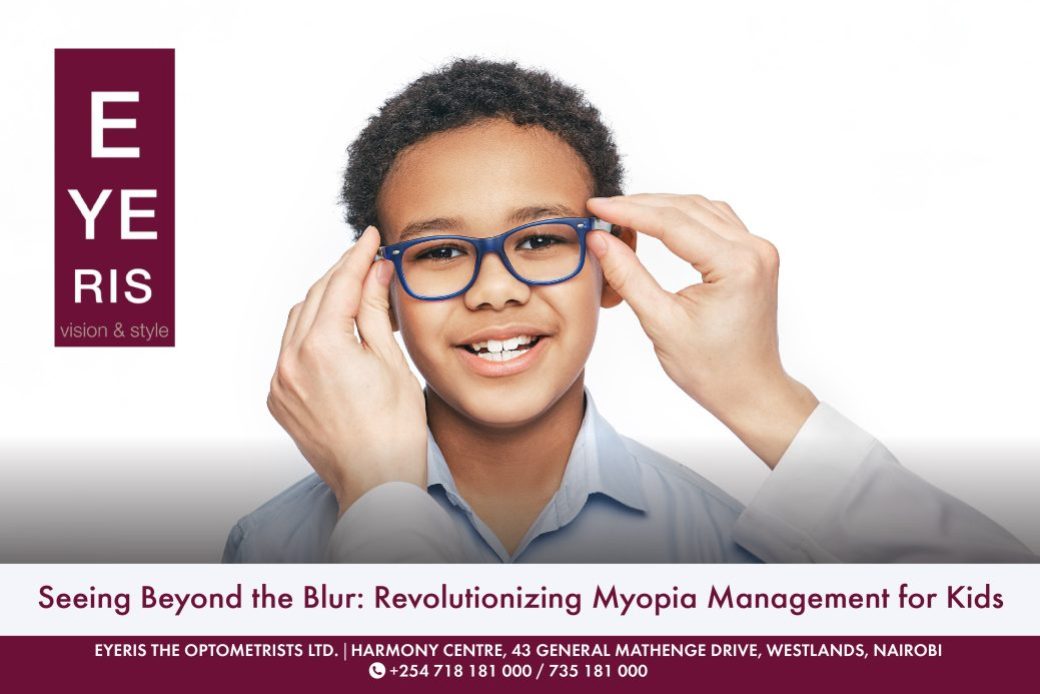What is Myopia?
Nothing is more important than the health and well-being of your child. Now and into the future, you want to see your child thrive. But you may have noticed your child struggling to see clearly at a distance, making it harder to concentrate at school and have a fulfilling experience at play. Your child may have myopia, also called near-sightedness. If left untreated in children, it can lead to lasting vision problems.
Illustration of a Myopic Eye

When the eyeball grows fast and becomes too long or the cornea is too curved and thick, images that should focus on the retina focus in front of it.
The incidence of myopia is expected to increase significantly as lifestyles change, with children taking part in more near-work activities like using digital devices, studying, reading, and spending less time outdoors. Hereditary, behavioural, and environmental factors also play a part.
Being able to have your child’s myopia diagnosed early not only corrects their vision now, but can help slow the progression of myopia and preserve their vision and eye health for the future.
Myopia is a growing problem and global concern. An estimated 5 billion people, or half of the global population, could be affected by short-sightedness by 2050.Research shows that more time spent on near-work activities is associated with a greater likelihood of myopia.
The optometrists at Eyeris have undergone training and certification for the management of myopia in children. We are working with two ophthalmologists in closely monitoring the children on this programme, which is proving to be highly successful. Currently, we have children using MiYOSMART lenses or Atropine 0.01% eye drops or a combination of the two
MiYOSMART lenses are innovative spectacle lenses for myopia control.They are safe, easy to use, effective and a non-invasive method to manage myopia.
Beyond correcting myopic refractive error, a two-year clinical trial shows that MiYOSMART lenses with D.I.M.S. (Defocus Incorporated Multiple Segments) technology work with slowing down myopia progression on average by 60% and halt myopia progression by 21.5%. By slowing down the progression of myopia and its associated eyesight deterioration, children can enjoy their lives more by seeing clearly.
Why MiYOSMART?
- Unique, innovative solution for managing myopia
- Clinically proven effectiveness in slowing down myopia progression
- Child friendly, easy to adapt and non-invasive
- Impact resistant material that keeps active kids safe
- Provides UV protection
Myopia control using Atropine 0.01%
- Atropine eye drops can slow myopia progression in children, but does not correct vision so spectacles or contact lenses are still required

What is atropine?
Atropine is used in general medicine, and also as an eye medicine or eye drop. As an eye drop, atropine 1% has been used historically to dilate (enlarge) the pupil and stop the eye’s focusing mechanism, which has applications for testing the vision of very young children, treating amblyopia (lazy eye) and also for treating some eye diseases.
The well-known ATOM2 atropine study seemed to indicate that 0.01% had the least side effects and the best effectiveness for myopia control. There is no research published yet on combining atropine with other myopia control treatments, like special types of spectacles, but using the two in combination is recommended when either option is not showing the desired results.
But care goes beyond that – these are additional important points to note:
- Spend time outdoors
Research has shown that spending time outdoors may reduce risk of myopia and its progression (an average of 2 hours a day being recommended) Encourage children to play outdoors, do their school assignments in the garden or balcony to get that exposure to light.

- Seek regular eye care
Make sure that your child has regular eye examinations to ensure that myopia or other vision problems are detected and treated early, reducing the worsening of vision, myopia progression and potential complications of high myopia.

- Take regular breaks
Reduce your child’s eye strain by reminding him or her to take breaks from intensive screen time or near-work. The 20-20-20 rule is a good guide: every 20 minutes, look 20 feet away for 20 seconds.

Eyeris The Optometrists
EYERIS always aims at exceeding expectations. When you become a patient of this practice, the health of your eyes will be their first concern, the second being to get the best possible visual performance for all your lifestyle needs.


Meet The Team
With a team of optometrists and dispensing opticians who specialize in visual correction and thorough care of the eyes, Eyeris has the latest techniques and equipment used in examining and safeguarding one’s sight.

Vision and Style being their driving words, EYERIS is committed to setting a standard of excellence. The practice prides itself with the latest advances in eye health care practices having an array of the most up-to-date vision care technology.
Some of the services and products include routine eye examinations for persons of all ages; thorough retinal examination using advanced technology; dispensing of spectacles by professionals who will advise you on the choice of the frame with comfort and cosmesis in mind; designer and budget eyewear; contact lens fitting, including specialized lenses for astigmatism and keratoconus and low visual aids.
Visit Us At Harmony Centre, 43 General Mathenge Drive, Westlands
CLICK HERE for Directions

Contact us for consultation
Mobile: +254 718 181 000 | +254 735 181 000
Email: info@eyeris.co.ke
Follow us on Social Media

Find Out More on Eyestrain As A Result Of Extended Use Of computers




